Introduction
Budget vs Actual Variance Analysis serves as a pivotal tool for financial management, enabling the comparison between what was projected in the budget and what was actually achieved. This analysis is not merely a one-off exercise at the beginning of the fiscal year but a continuous process that ensures the financial trajectory of a company stays aligned with its strategic goals. By benchmarking and justifying every expenditure, organizations can make informed decisions to adapt their financial strategies and operations as needed, ensuring alignment with long-term objectives.
The process encompasses rigorous scrutiny of every line item in the budget without being influenced by previous periods' actuals. Instead, each cost must be justified anew, thereby fostering a culture of fiscal responsibility and strategic resource allocation. This approach is particularly effective when employing Zero-Based Budgeting (ZBB), which mandates starting from a 'zero base' each year and thoroughly justifying each expense.
As the business environment evolves, variance analysis becomes an indispensable practice. It functions not only to identify discrepancies but also to signal opportunities for cost reduction, reallocation of resources, and enhancement of profit-generating initiatives. This proactive monitoring and adjustment of budgets reflect the dynamic nature of business, as famously noted by Mike Tyson: "Everyone has a plan, until they get punched in the mouth."
In a landscape where market variance and volatility significantly influence investment strategies and corporate finances, understanding and utilizing Budget vs Actual Variance Analysis is crucial. It provides the agility and insight necessary for a company to navigate through unpredictable market conditions and maintain a course towards its financial and operational targets.
What is Budget vs Actual Variance Analysis?
Budget vs Actual Variance Analysis serves as a pivotal tool for financial management, enabling the comparison between what was projected in the budget and what was actually achieved. This analysis is not merely a one-off exercise at the beginning of the fiscal year but a continuous process that ensures the financial trajectory of a company stays aligned with its strategic goals. By benchmarking and justifying every expenditure, organizations can make informed decisions to adapt their financial strategies and operations as needed, ensuring alignment with long-term objectives.
The process encompasses rigorous scrutiny of every line item in the budget without being influenced by previous period actuals. Instead, each cost must be justified a new, thereby fostering a culture of fiscal responsibility and strategic resource allocation. This approach is particularly effective when employing Zero-Based Budgeting (ZBB), which mandates starting from a 'zero base' each year and thoroughly justifying each expense.
As the business environment evolves, variance analysis becomes an indispensable practice. It functions not only to identify discrepancies but also to signal opportunities for cost reduction, reallocation of resources, and enhancement of profit-generating initiatives. This proactive monitoring and adjustment of budgets reflect the dynamic nature of business, as famously noted by Mike Tyson: "Everyone has a plan, until they get punched in the mouth."
In a landscape where market variance and volatility significantly influence investment strategies and corporate finances, understanding and utilizing Budget vs Actual Variance Analysis is crucial. It provides the agility and insight necessary for a company to navigate through unpredictable market conditions and maintain a course towards its financial and operational targets.
Role of Budget vs Actual Variance Analysis
The essence of effective financial management lies in the dynamic process of Budget vs Actual Variance Analysis. This analytical method empowers CFOs to dissect the variances between projected financial plans and the tangible outcomes. It's not simply a comparison of numbers; it's a strategic tool that sheds light on performance gaps and opens avenues for corrective measures. By diligently monitoring these discrepancies, companies can pinpoint inefficiencies, optimize resource allocation, and fortify their financial footing.
Mike Tyson's words, “Everyone has a plan, until they get punched in the mouth,” resonate profoundly with the essence of budget management. A budget, after all, is a living entity, subject to the ebbs and flows of business realities. It's imperative that actual expenditures are regularly scrutinized and adjusted to ensure alignment with the ever-shifting corporate compass.
Moreover, the significance of technology in shaping financial landscapes cannot be overstated. With the IT sector's burgeoning role in value creation, understanding the interplay between technological investment and budgetary outcomes becomes paramount. As businesses globally navigate the trillion-dollar terrain of tech spending, the correlation between tech-savviness and commercial success becomes increasingly pronounced.
As financial leaders, CFOs are tasked with the delicate balance of maintaining an organization's fiscal health while championing its strategic initiatives. This requires a methodical approach to budgeting that involves rigorous assessment and alignment of financial plans with overarching strategic goals. Through a comprehensive evaluation, one can ensure that each dollar invested is a step toward the realization of long-term objectives. Zero-based budgeting emerges as a potent methodology in this context, advocating for a meticulous justification of budgetary requests, thereby instilling a culture of cost consciousness and fiscal prudence.
In our journey through the intricacies of financial planning, we're reminded of the adaptability required to thrive amidst market variances. It's not just about setting a financial course but also about being agile enough to navigate the unpredictable tides of the economic sea.
How to Perform Budget vs Actual Variance Analysis
To effectively conduct a Budget vs Actual Variance Analysis, financial professionals follow a structured approach. Initially, data is collected to compare the budgeted figures with the actual financial outcomes. Variances are then calculated to quantify the differences between these figures. The critical phase involves a thorough analysis to uncover the reasons behind these variances, which could range from changes in market conditions to internal process inefficiencies. Understanding the root causes is pivotal in evaluating the variances' impact on the organization's financial health. With these insights, it's possible to formulate a strategic action plan aimed at addressing the variances and refining future budgeting methods, ensuring more accurate forecasting and preventing potential financial pitfalls.
One illustrative case involves the utility sector, where the risk of catastrophic wildfires has surged over the past two decades. Here, the uncertainty of risk levels and the cost-effectiveness of mitigation strategies make variance analysis crucial for financial planning. For instance, utility companies need to balance the cost of safety measures, which may lead to higher electricity rates, against the reputational risks of wildfires. These companies often face intense scrutiny in media and politics, making it essential to maintain a sound financial strategy that includes regular variance analysis.
Adopting advanced analytical tools can enhance this process. For example, some organizations have integrated Monte Carlo Simulations into their financial planning. This technique helps manage the uncertainty of project timelines and resource allocation, especially for products with infrequent updates due to their critical infrastructure role. By incorporating such simulations, companies can forecast more accurately, schedule product releases effectively, and align them with customer delivery needs, even in industries with complex logistics like shipping.
The concept of variance analysis extends beyond traditional finance and is also relevant in fields like data science. The 'Thinking Like a Data Scientist' methodology emphasizes the integration of data analysis, design thinking, and economics to achieve responsible business outcomes. Similarly, the fashion industry leverages data science for 'localization,' where understanding regional preferences through data analysis helps tailor products to local markets. These examples underscore the value of variance analysis in adapting to dynamic environments and making informed decisions for sustainable growth.
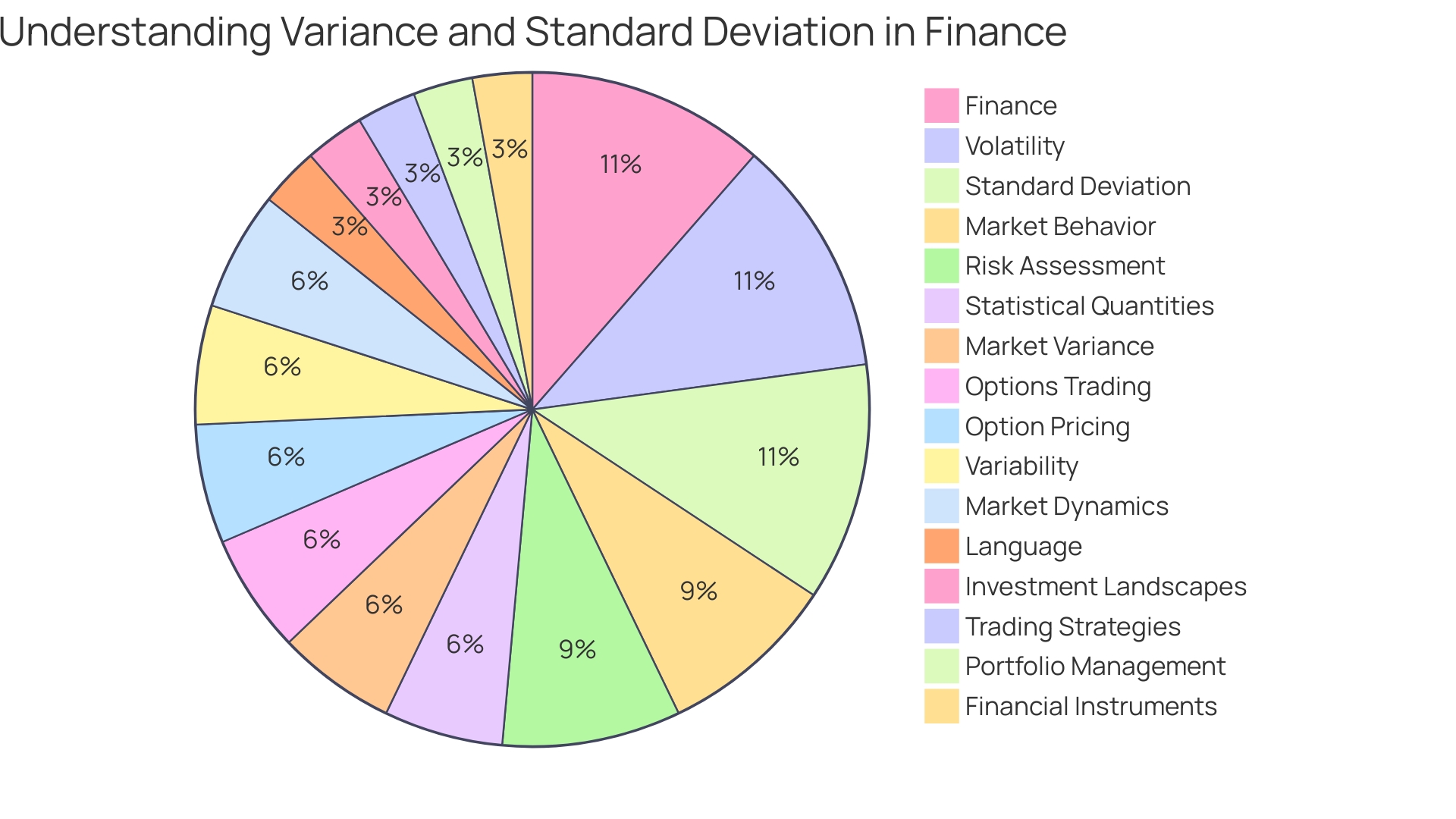
Components of Budget vs Actual Analysis
A meticulous Budget vs Actual Analysis is vital for the financial health of any organization. This analysis not only pinpoints discrepancies but also aids in formulating effective strategies for financial stability and growth.
-
Sales and Revenue Variances: Delving into sales and revenue variances is crucial. It entails a comparison between the projected sales figures and the actual outcomes. For instance, a project in an options-based market would necessitate a thorough examination of the structural components to gauge originality and modifications, much like assessing sales figures against expectations to identify deviations.
-
Expense Variances: Scrutinizing expense variances is another integral aspect. It involves identifying and assessing the reasons behind any discrepancies between the budgeted and actual expenditures. A report underscored the variability in IT security budget allocations, highlighting the significance of monitoring expense allocations across different sectors.
-
Profitability Variances: Evaluating profitability variances is about assessing how these differences affect the business's bottom line. This encompasses analyzing standard costs and actual production costs, as noted in cost accounting practices, to determine their impact on profitability.
-
Cash Flow Variances: Lastly, analyzing cash flow variances is essential. It's about understanding the differences between expected and actual cash flows. As cash flow is the lifeblood of a business, tracking these variances ensures that the company can meet its expenses and invest in growth opportunities.
By leveraging a business budget template, organizations can streamline the budgeting process and make informed decisions. In tandem, business analytics, covering descriptive to prescriptive analytics, plays a pivotal role in interpreting these variances and guiding strategic action. As Mike Tyson's quote illustrates, 'Everyone has a plan, until they get punched in the mouth,' it is imperative to regularly monitor and adjust budgets to navigate the dynamic business landscape effectively.
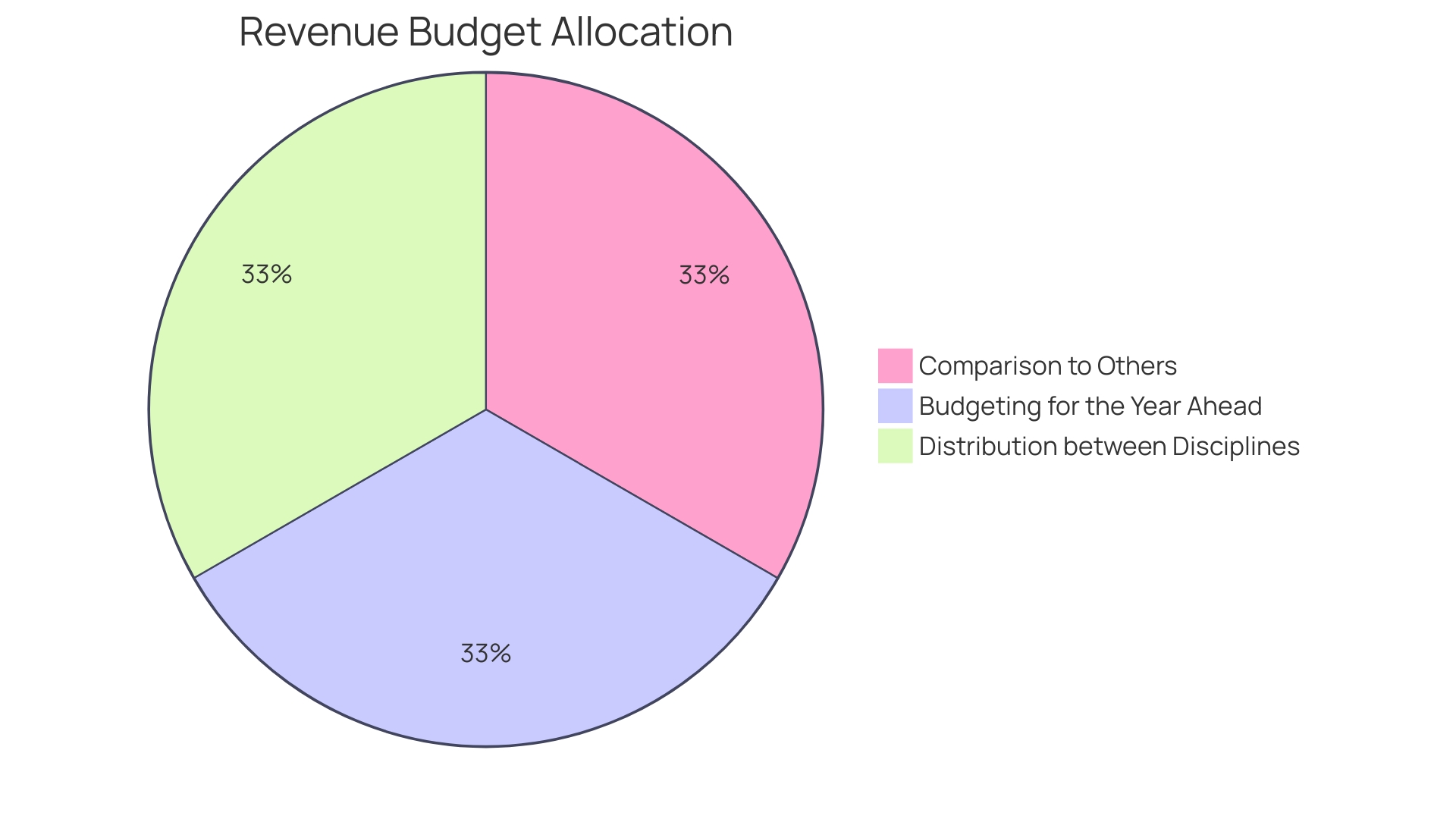
Types of Variances: Favorable and Negative
Discrepancies between expected and actual financial outcomes fall into two primary categories: positive or adverse variances. Positive variances occur when actual results surpass budgeted expectations—this might mean revenues exceed projections or expenses fall below what was anticipated. These positive deviations are typically a sign of a business outperforming its financial plans. Conversely, adverse variances highlight areas where actual figures fall short of budget expectations, whether through lower-than-forecasted revenues or expenses exceeding budget limits. These negative variances are critical signals necessitating immediate investigation and prompt corrective measures to realign performance with financial objectives.
For instance, when considering the nonprofit sector, the variability in effectiveness and efficiency among organizations is remarkable. Some charities deliver significantly more impact per dollar than others, a fact that should inform budgetary decisions. This concept is echoed in the corporate sector, where investments in an organization must be scrutinized for their potential return on investment (ROI). An example is the Ford Foundation, which recognized the need to adapt its digital engagement strategies to more effectively connect with its audience, thereby maximizing the impact of its spending on these initiatives.
Recent economic news also plays a role in shaping budget vs actual variance analysis. For example, shifting core inflation rates in the US, as reported by experts like Nick Chatters of Aegon Asset Management, may impact budgeting in terms of operational costs and investment strategies. The appointment of a new chair at the ECB's supervisory board highlights the import of navigating financial landscapes amid fluctuating interest rates and economic challenges.
Ultimately, a well-constructed budget is more than a series of numbers; it narrates the story of a project or organization's plans and priorities. This narrative is supported by detailed expense categories that explain not just the cost but also the rationale behind each financial decision. As financial stewards, it is crucial to understand these narratives and use variance analysis as a tool to refine and enhance financial strategies, ensuring alignment with the overarching goals of the organization.
Steps to Prepare a Budget Variance Report
Effective budget variance analysis is a multi-step process designed to provide insights into financial performance and guide strategic decisions. To start, it is essential to collect both the forecasted budget figures and the actual financial data that has transpired. This data forms the foundation for calculating variances across each category of interest. The variances should then be clearly showcased in a well-structured report, highlighting differences between the projected and actual figures.
A thorough analysis must accompany the calculated variances, delving into the causative factors behind any discrepancies. For instance, if a budget was established with the expectation that certain funds would be disbursed or encumbered, but this did not occur as planned, an explanation is required to understand the implications. In scenarios where operational reviews are warranted, these can lead to a reevaluation of resource allocation and strategy adjustments.
Additionally, the report should extend beyond mere numbers by interpreting the story the budget tells—such as the narrative behind a project's costs and the values that underpin them, ensuring that stakeholders comprehend not just the 'what' but the 'why' of financial outcomes. As performance reporting is vital for organizations to gauge future success, this analysis also serves as a tool for communicating financial metrics to stakeholders.
Lastly, drawing from the analysis, the report needs to propose actionable recommendations aimed at rectifying variances and refining future budgeting processes. These actions could be influenced by reviewing cases where asset managers have used their deep knowledge of market conditions to approve budgets promptly. By considering the broader strategic context, including the role of technology investments in value creation and the rigorous scrutiny of zero-based budgeting, the report can provide a roadmap for financial optimization and accountability.
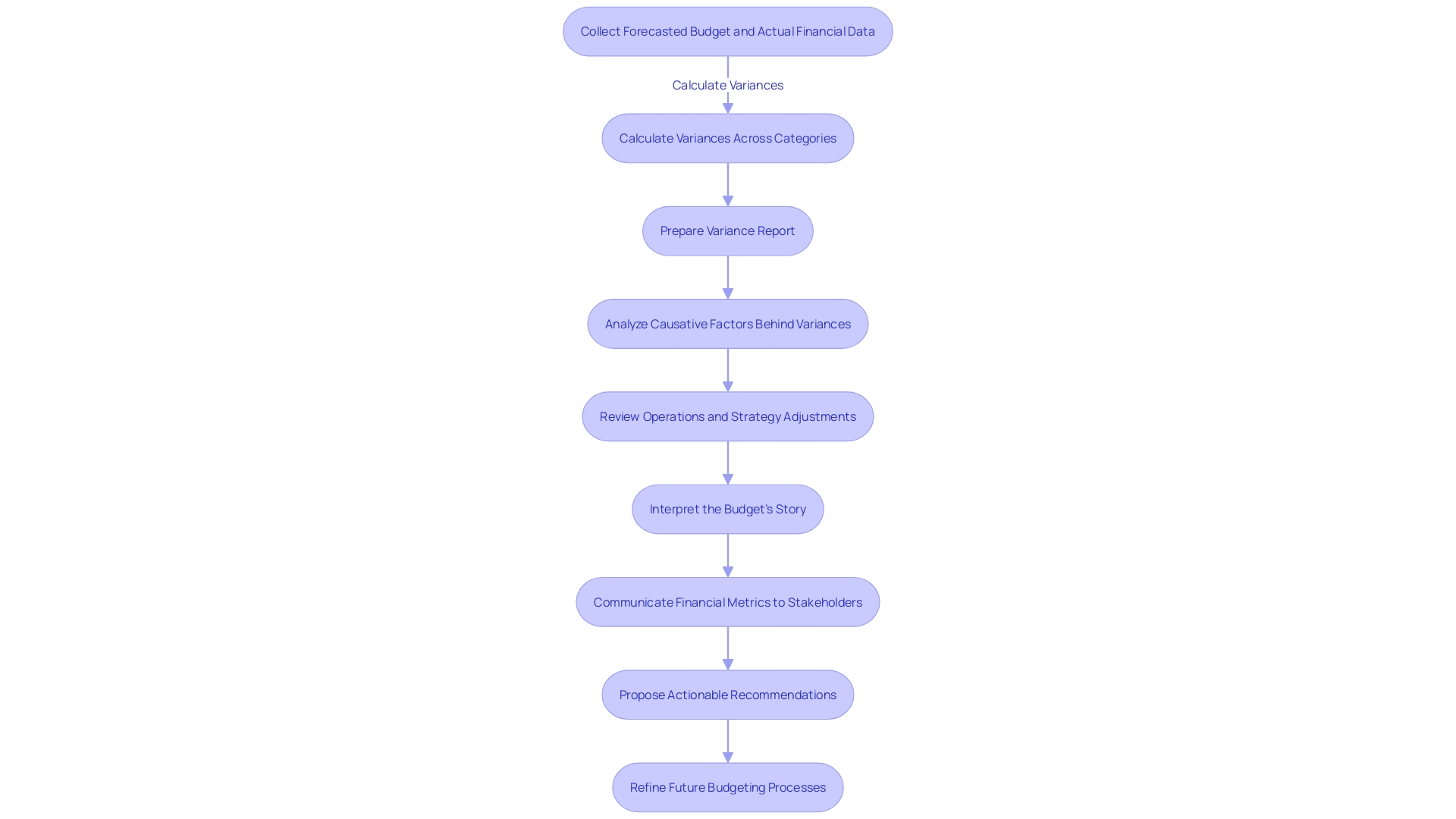
Budget vs Actuals Report: Summary of Budget and Actual Results
A comprehensive Budget vs Actuals Report not only aggregates the budgeted and actual financial outcomes for a given period but also serves as a critical tool for CFOs and financial managers in evaluating business performance. This report, encompassing essential metrics like sales, expenses, profitability, and cash flow, plays an instrumental role in comparing actual results with projected financial plans, thereby illuminating discrepancies and pinpointing areas in need of strategic intervention.
The significance of such a report is underscored by real-world scenarios, such as the unforeseen federal holiday for Ronald Reagan’s death, which hindered financial departments from reviewing weekly reports. These reports often highlight discrepancies which could range from 30 to 40 pages of issues, signaling the need for prompt attention and corrective measures.
Moreover, research with 127 companies indicates that although many claim to have adopted agile methodologies, only 53% have successfully realized transformation targets. An agile approach, when properly implemented, can lead to a 15% to 20% reduction in delivery costs, two to four times faster product delivery, and a twofold increase in total shareholder return. These findings reinforce the value of a Budget vs Actuals Report in facilitating swift and effective decision-making to achieve such outcomes.
In the context of budgeting, it's interesting to note how the Budget Estimates (BE) outlined in the Union Budget reflect expected revenue and expenditure, which are subject to change and later compared against actuals. The importance of this comparison is heightened by the dynamic nature of financial management, as evidenced by the current economic discourse and fiscal policies.
Utilizing insights from a Budget vs Actuals Report can be a game-changer for businesses, as it enables them to align their operational strategies with financial objectives, much like how companies with high margins, such as Eastern European and Russian firms, adapt to market conditions. By comparing budgeted figures with actual performance, organizations can make informed decisions that prioritize value over profit maximization, as advocated by financial experts.
In conclusion, the Budget vs Actuals Report is not just a summary of numbers but a strategic compass that guides CFOs and financial managers through the complex terrain of corporate finance. It's a critical instrument that aids in steering an organization towards sustainable growth, operational efficiency, and long-term financial success.
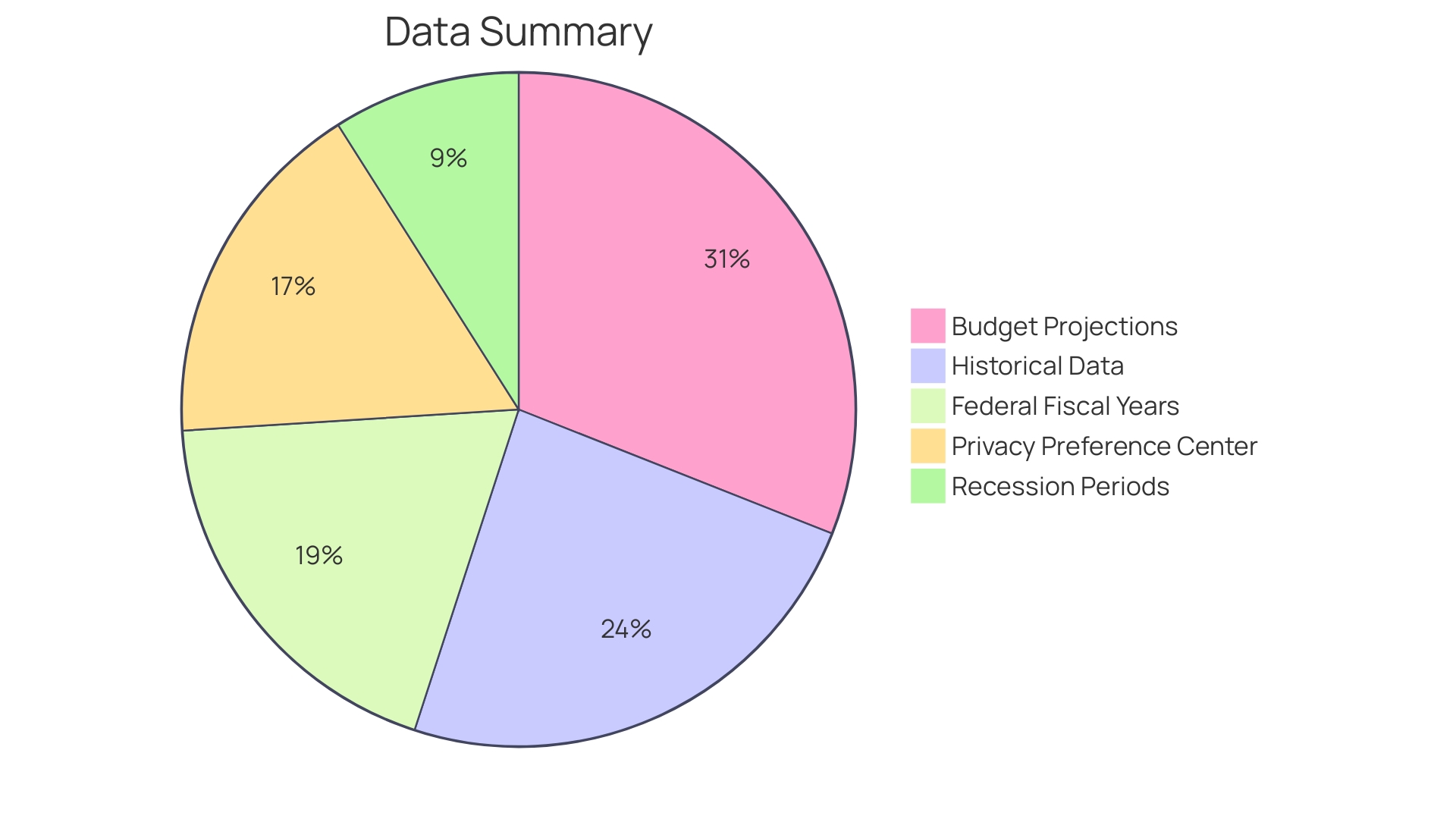
Breakdown of Variances
A careful examination of variances in budget versus actual analysis is imperative for financial leadership. It involves dissecting the differences between what was expected and what has actually occurred, shedding light on specific areas of deviation. This scrutiny is not just a theoretical exercise but a practical one, as famously noted by Mike Tyson, "Everyone has a plan until they get punched in the mouth." Similarly, budgets must be agile, ready to adapt when reality doesn't align with projections.
The process aligns with the Schmarzo Digital Asset Economic Valuation Theorem, highlighting the perpetual value of data and analytics. These assets never deplete and can exponentially increase in value through shared use and continuous refinement—a principle that can be applied when analyzing financial variances.
By understanding and addressing these variances, financial managers can pinpoint trends and anomalies, leading to informed decisions that correct the course. This ongoing analysis is akin to the process described in the Economic Survey presented before Parliament, which sets the tone for financial planning and adjustments.
Moreover, the budget variance analysis is underpinned by the principles of bias and variance in predictive modeling. Just as a model must balance complexity with accuracy to avoid being 'too hot' or 'too cold', financial managers must strike the right balance between detailed budgetary constraints and practical flexibility.
These concepts are further reinforced by current economic discussions and insights shared by financial experts and news outlets, emphasizing the dynamic nature of financial planning and the importance of staying informed and adaptable. The aim is to ensure that the financial path of the organization is not only well-planned but also resilient to the inevitable shifts in the economic landscape.
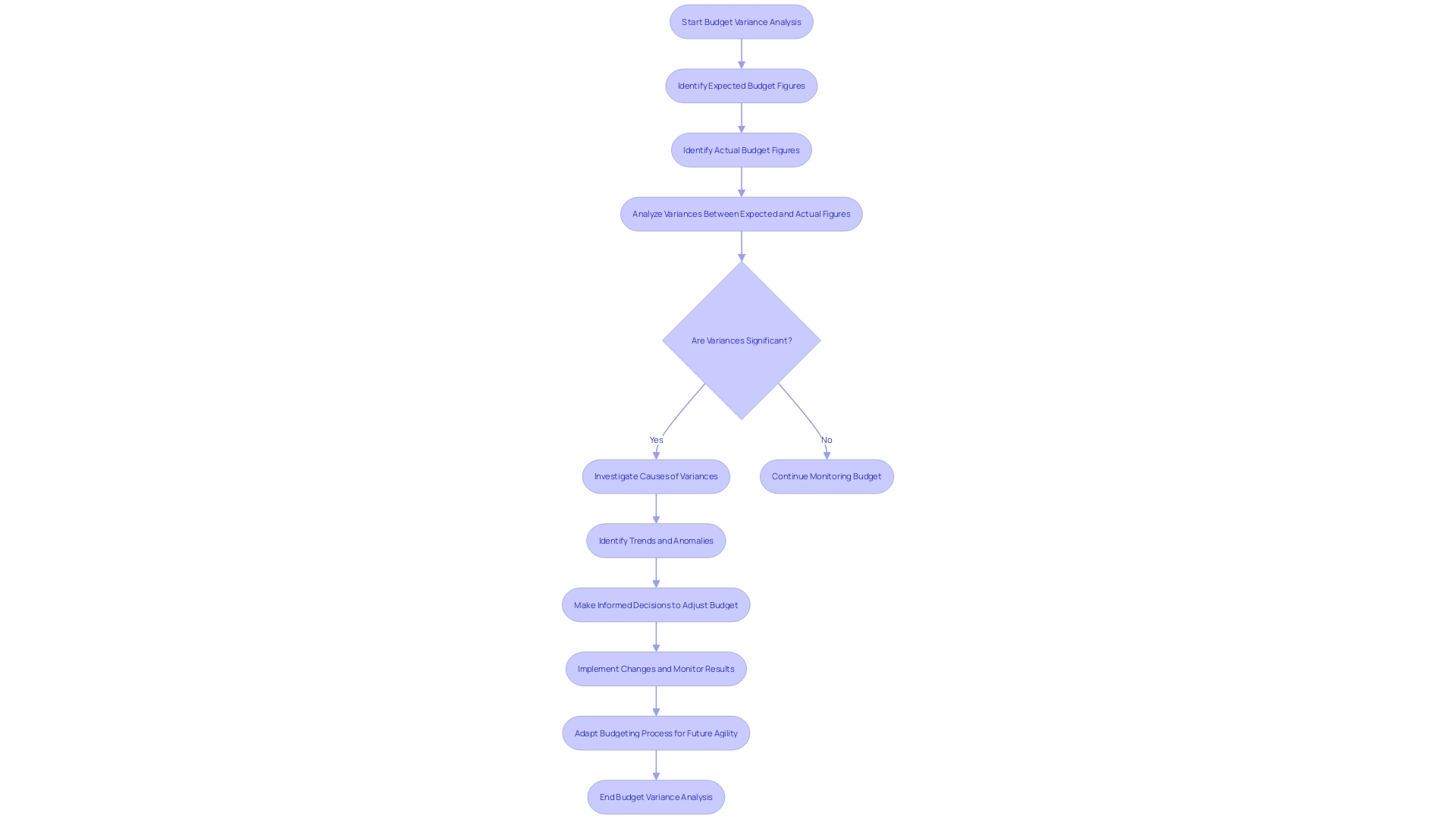
Variance Analysis: Identifying Factors and Reasons
Variance Analysis is an essential process that delves into the discrepancies between projected budget figures and actual financial outcomes. It meticulously dissects various components, including sales volume fluctuations, pricing strategies, cost of goods sold, operational expenditures, and external influences such as market dynamics. By dissecting the roots of these variances, organizations are empowered to take corrective action, ensuring their financial strategies are responsive to real-world results.
A comprehensive approach to Variance Analysis is not unlike the meticulous research conducted on software developer productivity, where specific factors are identified and prioritized for their impact. Similarly, financial leaders must scrutinize the contributing elements to their budgetary variances to optimize performance and direct resources effectively. This strategic analysis is critical for adapting to changes and achieving long-term financial objectives.
For instance, recent studies highlight the persistent use of spreadsheets for financial tasks, despite known limitations and the potential for errors in complex operations. This insight suggests that even with advanced tools available, the familiarity and perceived convenience of spreadsheets can lead to significant variance issues. Financial leaders should consider this when evaluating the tools and methods used for budgeting and analysis.
The application of rigorous data analysis techniques, akin to those used in experimental development, can enhance Variance Analysis. By drawing upon systematic research and practical experience, CFOs can innovate and refine their financial processes, much like the development of new products or systems. This includes not just a review of past performance but also an anticipation of future challenges and opportunities for improvement.
Ultimately, Variance Analysis is not a mere comparison of figures but a strategic tool that provides actionable insights. By understanding the complexities and nuances of financial data, organizations can navigate the intricacies of market conditions and operational efficiency, driving sustainable growth and stability.
Recommendations for Action
Integrating Budget vs Actual Variance Analysis into financial practices not only aligns with the dynamic nature of business environments but also serves as a critical compass for strategic decision-making. By continually monitoring and adjusting the budget in response to actual performance, organizations can navigate towards their financial targets with precision.
-
To drive revenue growth, consider refining sales tactics or adjusting pricing models. Data from Kaggle competitions and insights from experts such as those teaching at UCLA can inspire innovative approaches to data analysis and market prediction.
-
Cost-efficiency can be enhanced by adopting Zero-Based Budgeting (ZBB) principles, which necessitate a rigorous examination of every expense, ensuring that each cost is fully justified and contributes to the company’s strategic goals.
-
Operational efficiency can be bolstered by benchmarking against industry standards and learning from case studies of leading companies that have successfully optimized their resource allocation.
-
Market research, a fundamental step before finalizing a budget, can illuminate new opportunities and directions for business growth. It’s essential to stay informed about global trends and predictions from industry experts to identify these opportunities.
-
Improving budgeting and forecasting accuracy is paramount, as highlighted by The CMO Survey, which reveals a negative correlation between total sales and marketing budgets as a percentage of sales. Businesses must refine these processes to maintain financial stability.
-
Finally, developing robust contingency plans is crucial for risk mitigation. Kahneman and Tversky's research on biases underscores the importance of considering sample sizes and confidence intervals when making decisions based on data analysis. Such due diligence can inform more effective contingency strategies.
By employing these recommendations and leveraging tools such as data analytics, as emphasized in the '2024 State of Revenue Report,' CFOs can ensure their organizations remain agile and well-prepared for the ever-changing business landscape.
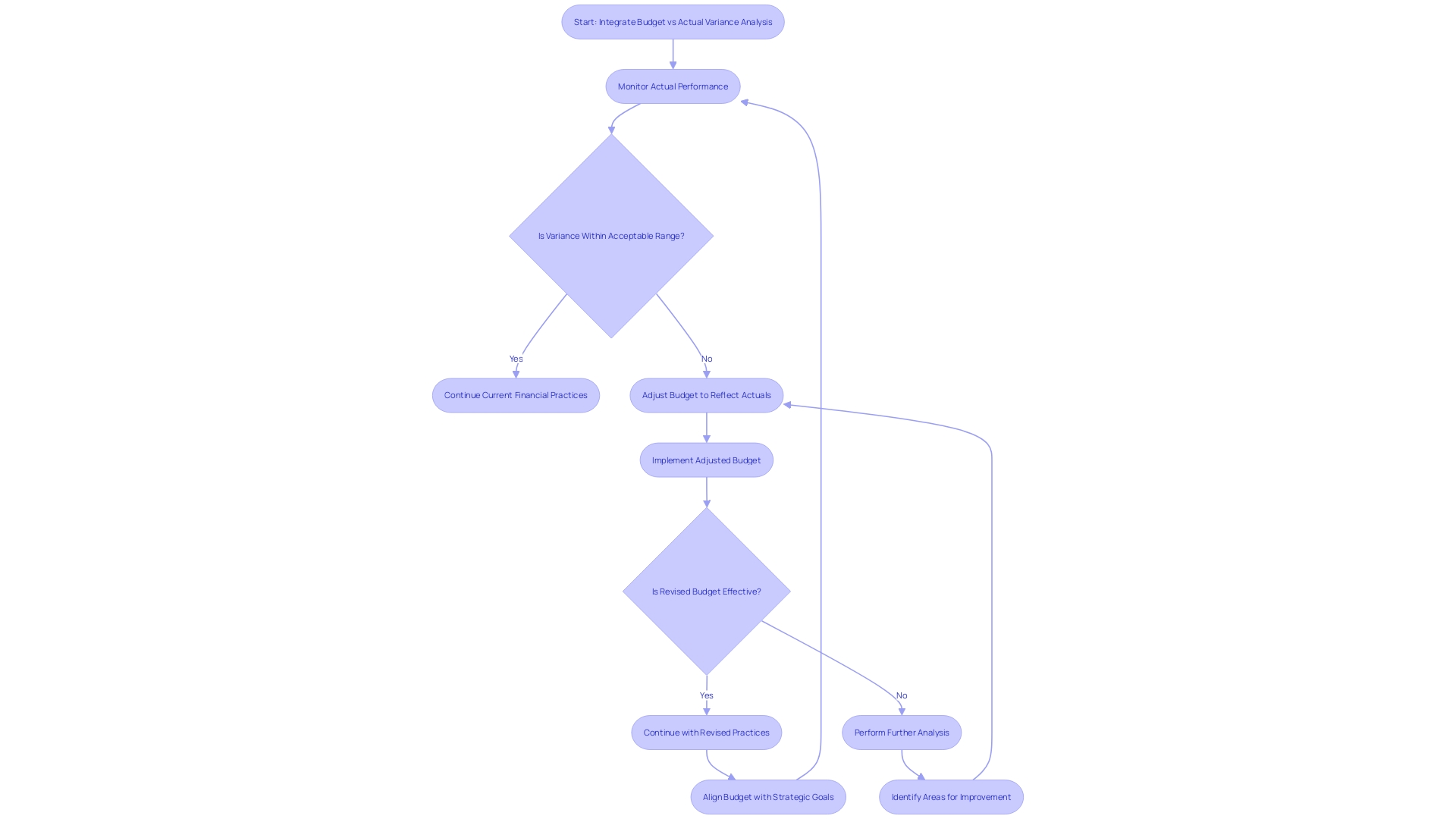
Best Practices for Variance Analysis
To optimize the Budget vs Actual Variance Analysis, CFOs can adopt the following advanced practices:
- Regularly reviewing and comparing budgeted and actual results is crucial for maintaining fiscal discipline and identifying areas that deviate from the planned financial path.
- Employing standardized templates and tools not only brings consistency to the analysis process but also facilitates clear communication across departments and stakeholders.
- Involvement of key stakeholders in the variance analysis ensures that insights are comprehensive and that decision-making is collaborative.
- Documenting the reasons behind variances is not just about record-keeping; it's about understanding the 'why' behind the numbers, which can inform future budgeting strategies.
- Continuous monitoring of performance and the willingness to adjust budgets in response to actual performance are indicative of an agile and responsive financial strategy.
- Conducting variance analysis at multiple levels, such as by department or project, allows for granularity in understanding and addressing specific financial dynamics.
In the context of maintaining critical infrastructure, as seen with on-premise products, the use of innovative tools like Monte Carlo Simulations has been instrumental in planning and forecasting. These simulations help in dealing with the complexities of scheduling releases and aligning them with customer delivery, especially when the products play a role in essential operations.
Moreover, the digital transformation across industries emphasizes the importance of robust IT infrastructure and the need for technology competence in shaping successful budget strategies. As organizations globally spend trillions on tech goods and services, IT budgets have become a critical component of overall financial planning.
Lastly, as recommended by leading psychologists, considering the size of the sample and confidence intervals in any form of statistical analysis is paramount to avoid common errors that lead to poor decision-making. This analytical rigor is essential for CFOs who are tasked with guiding their organizations towards financial stability and growth through effective financial planning and management.
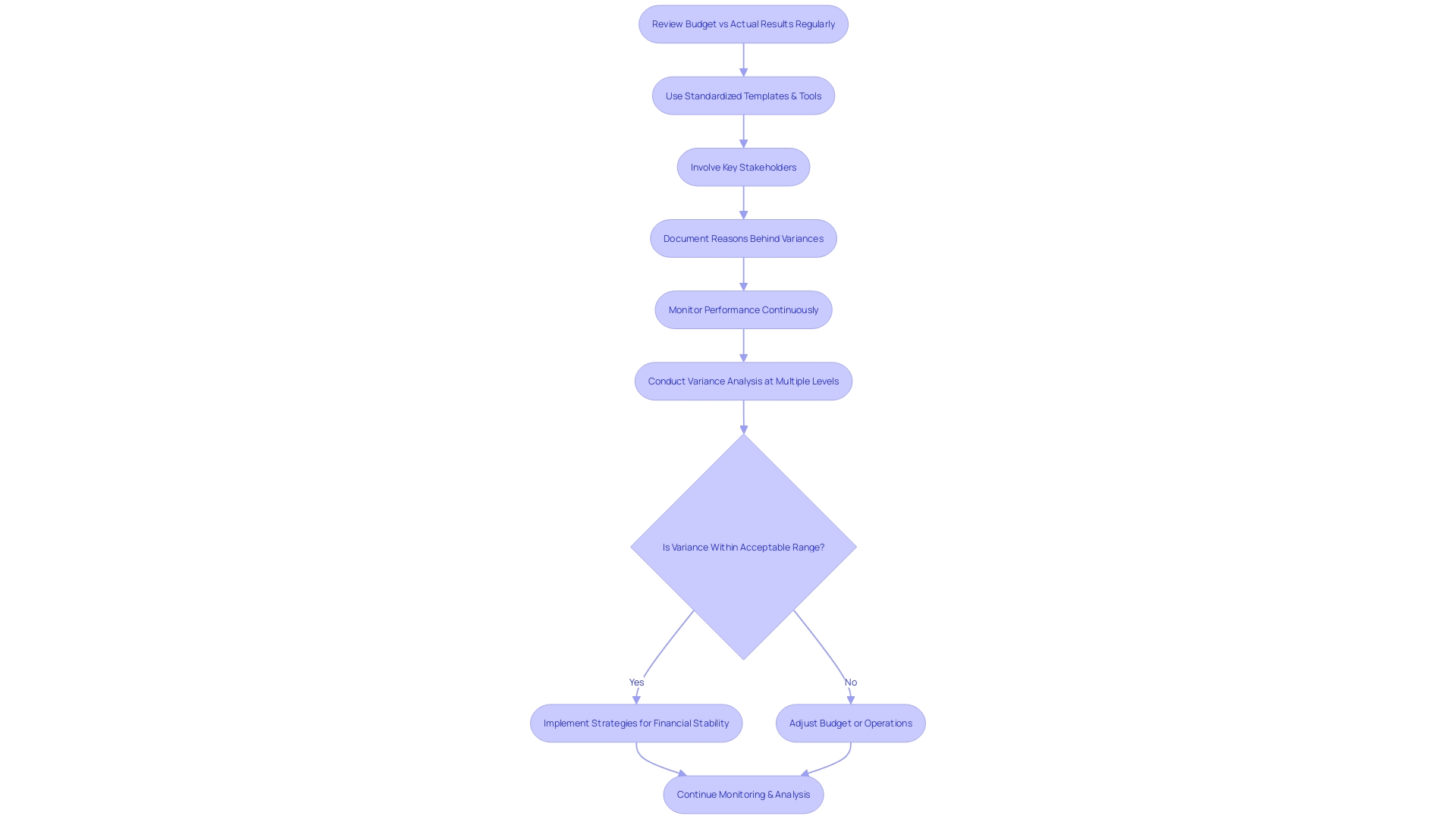
Using Spreadsheets for Variance Analysis
Spreadsheets have long been the cornerstone for financial management, particularly in the realm of Budget vs Actual Variance Analysis. The adaptability of spreadsheets allows financial professionals to manipulate and interpret data with ease, utilizing a range of functions and formulas to identify variances, transform numbers into engaging visuals, and compile comprehensive reports. Moreover, their capacity for collaboration ensures that financial teams can work in concert to maintain the fiscal health of their organizations.
Despite the widespread use of spreadsheets, recent industry studies highlight a startling error rate, with 90% of spreadsheets with over 150 rows containing significant mistakes. This statistic underscores the need for meticulous scrutiny and the potential risk spreadsheets pose to decision-making processes. Furthermore, experts emphasize the importance of critical thinking, continuous validation, and a standardized approach to minimize errors and enhance spreadsheet reliability.
While Mike Tyson's adage, 'Everyone has a plan, until they get punched in the mouth,' resonates in the world of finance, it is a reminder that while budgets are foundational, they are not static. Regular review and adjustment of actuals are imperative to ensure alignment with strategic directions. The budgeting process, inclusive of benchmarking, is a dynamic exercise in strategic planning, demanding vigilant oversight and adjustment as circumstances evolve.
In the context of optimization, born from the strategic challenges of World War II, the modern financial landscape continues to demand decision-making that is both efficient and effective. Optimization techniques have proven invaluable in a range of industries, enabling organizations to minimize costs and maximize operational efficiency.
The reliance on spreadsheets remains robust, with surveys indicating that 70-80% of businesses continue to employ them for various tasks. The familiarity and flexibility of spreadsheets contribute to their enduring popularity, despite the advent of more sophisticated tools. As financial professionals navigate the complexities of budgeting and analysis, the role of spreadsheets remains pivotal, but not without the need for a discerning approach to mitigate the risks of errors and inefficiencies.
Common Reasons for Budget Variances
Understanding the underlying causes of budget variances is essential for organizations aiming to fine-tune their financial strategies. These variances may stem from:
- Market condition changes reflecting economic shifts or competitive pressures.
- Demand or sales volume fluctuations that impact revenue projections.
- Production or operational cost variations, which can be caused by supply chain disruptions or changes in commodity prices.
- Budgeting assumptions that were inaccurate or failed to anticipate actual conditions.
- External factors like inflation or currency exchange rate shifts, which can dramatically alter cost structures.
- Regulatory changes or evolving industry trends that necessitate adjustments in business operations.
Acknowledging these factors is the first step towards proactive management and refinement of budgeting approaches. By closely examining the root causes of variances, organizations can develop more resilient financial planning methods that accommodate the dynamic nature of business and economic environments.
Benefits of Budget Variance Analysis
Evaluating performance, making informed decisions, exercising financial control, fostering continuous improvement, and ensuring accountability are critical benefits derived from budget variance analysis. For instance, AT&T's historical struggle with bureaucratic inertia was disrupted by recognizing the need for a more agile financial management approach. By analyzing budget variances, they could pinpoint systemic inefficiencies and initiate targeted reforms. Similarly, companies with complex product delivery systems, such as those requiring on-premise installations, use tools like Monte Carlo simulations to better anticipate feature completion and manage release schedules effectively. This level of precision in financial planning is essential for organizations operating in regulated environments or with significant technical debt.
The importance of a streamlined budgeting process is underscored by the chaos often observed in companies where finance and marketing departments misalign. By assigning a lead to oversee the budget, as seen in successful marketing operations, coherence can be achieved, reducing frustration and enhancing decision-making efficiency. Furthermore, a top-down strategy alignment for budgeting is advocated, ensuring that all departments cohesively pursue the organization's overarching objectives, rather than disparate bottom-up approaches that may lead to fragmented efforts.
Data science also reveals the hidden costs associated with inefficient financial management. The Boston Consulting Group reports that less than half of data models reach production, with data scientists spending a significant portion of their time on non-innovative tasks. This inefficiency underscores the need for a budget variance analysis to identify waste and reallocate resources towards more productive endeavors. The insights from budget variance analysis are not just about numbers; they empower organizations to make strategic technical decisions, understand constraints, and build evolutionary architectures that align with their financial and operational goals.
Appendix: Budget to Actual Variance Template
Embedded within our comprehensive guide, the Appendix section stands out with a practical tool: a Budget to Actual Variance Template. This template is not merely a static document, but a dynamic framework designed to streamline the variance analysis process. It includes built-in formulas and adaptable formatting, enabling organizations to conduct insightful financial reviews with efficiency. Whether adjusting for unique fiscal structures or particular strategic objectives, this template can be tailored to align with the specific contours of any business landscape.
The essence of investing in tools like this template lies in its direct contribution to informed decision-making—crucial for organizational growth. As illustrated by the Ford Foundation's digital transformation, the right tools can redefine productivity and effectiveness, even in the realm of content publication. Similarly, adopting a robust budget variance template empowers financial leaders to pivot with precision, ensuring resources are allocated where they deliver the highest return on investment (ROI).
Consider the wisdom of Mike Tyson: "Everyone has a plan, until they get punched in the mouth." A budget is a living plan, necessitating regular reassessment to stay on course. Our template encapsulates this philosophy, providing a foundation for ongoing fiscal health checks. It echoes the sentiment that while yearly budgets might be the traditional method, the agility afforded by real-time analysis is invaluable in today's swiftly changing business environment.
Moreover, the template echoes the principles of Total Risk Analysis (TRA), advocating for a thorough examination of financial decisions. By incorporating this template into your financial strategy, you're not just tracking numbers; you're embracing a system that scrutinizes the impact of every dollar spent, aligning with the proactive approach modern financial management demands.
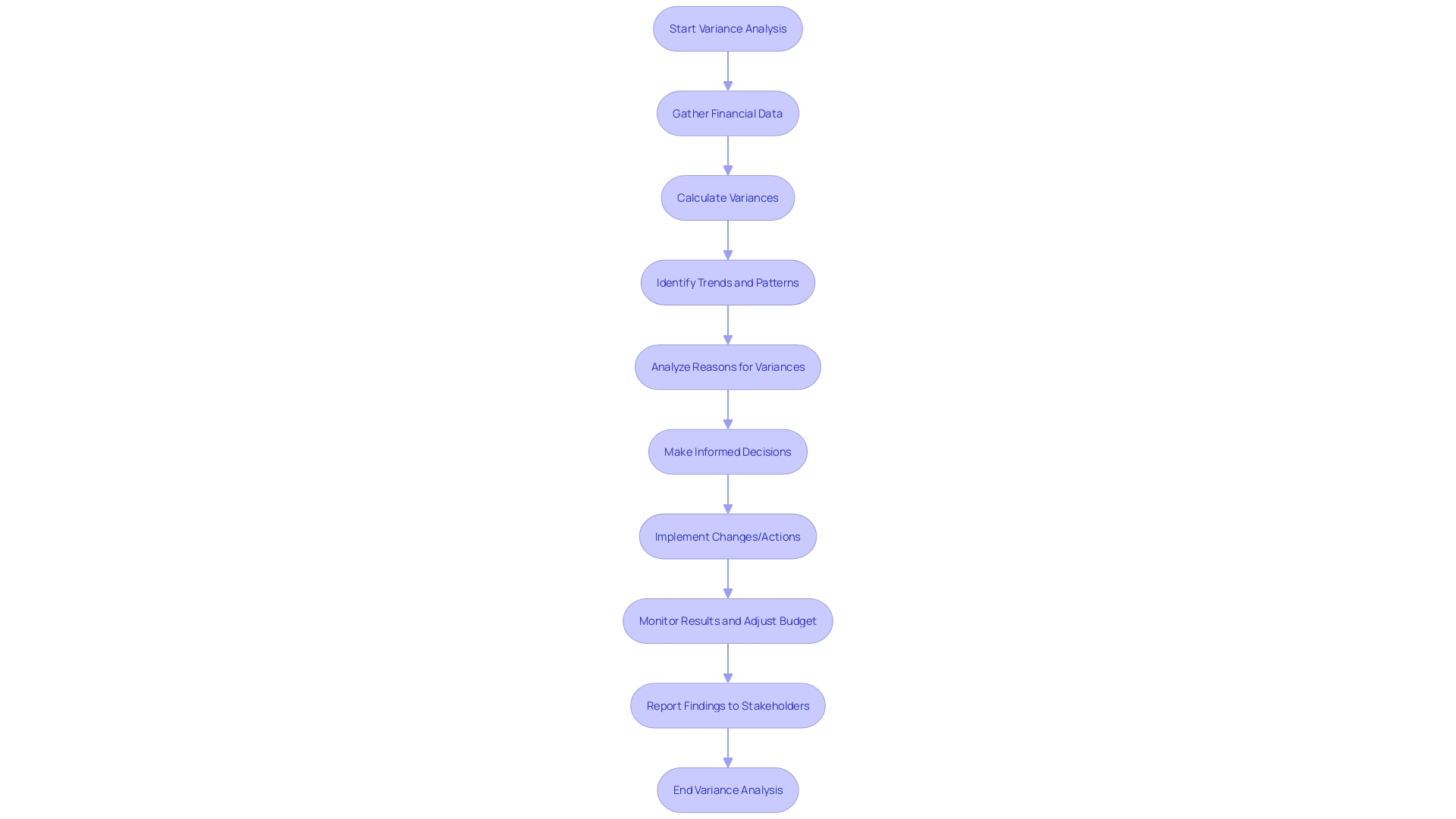
Conclusion
In conclusion, Budget vs Actual Variance Analysis is a pivotal tool that enables organizations to compare projected budget figures with actual outcomes. By justifying every expenditure and making informed decisions, organizations can adapt their financial strategies to align with long-term objectives. Variance analysis identifies discrepancies and opportunities for cost reduction, resource reallocation, and profit enhancement, providing the agility and insight needed to navigate unpredictable market conditions.
To perform effective analysis, financial professionals follow a structured approach, utilizing advanced tools like Monte Carlo Simulations to improve forecasting accuracy. Understanding favorable and adverse variances is crucial, as positive variances indicate outperformance while adverse variances require investigation and corrective measures.
Optimizing analysis involves best practices such as regularly reviewing and comparing budgeted and actual results, involving key stakeholders, and documenting reasons behind variances. Integrating variance analysis into financial practices allows organizations to drive revenue growth, enhance cost-efficiency, and improve operational efficiency. It also facilitates market research, refines budgeting and forecasting accuracy, and supports effective risk mitigation.
In conclusion, Budget vs Actual Variance Analysis is a critical compass for strategic decision-making, guiding organizations towards sustainable growth and long-term financial success. By adopting best practices, leveraging advanced tools, and continuously monitoring and adjusting budgets, organizations can navigate the dynamic business landscape, achieve their financial objectives, and remain resilient in the face of uncertainty.




